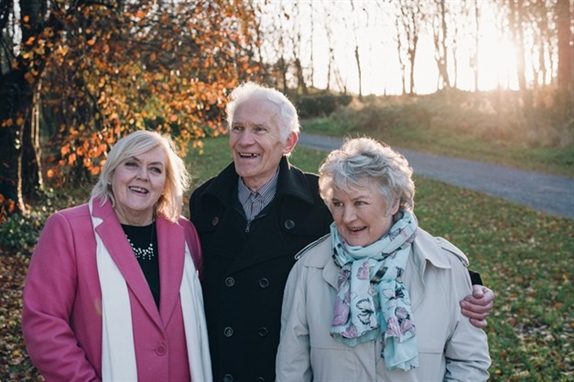
Tuam survivors Teresa O'Sullivan, Peter Mulryan and Carmel Larkin.
In the week when excavations begin at Ireland's Tuam Mother and Children's home to recover the bodies of hundreds of infants, we look back to April 2021 and an article that explores the roles of Information Professionals in preserving
the survivor stories for future generations
Archives at the National University of Ireland, Galway, are playing a role in the investigations that helped unearth the truth about a bleak period in Galway’s history – The Tuam Mother and Baby Home. Archivist at the university’s Hardiman Library, Dr Barry Houlihan, tells Rob Green about his involvement in the ongoing project to ensure the stories of those affected by the scandal are preserved.
Dr Barry Houlihan’s work at Hardiman Library, University of Ireland, Galway, focuses on building collections that align with “our regional distinctiveness in the West of Ireland, in terms of Irish language, landscape and culture, as well
as on other key strands relating to archives of Irish theatre and literature, Northern Irish politics and conflict, and oral history”
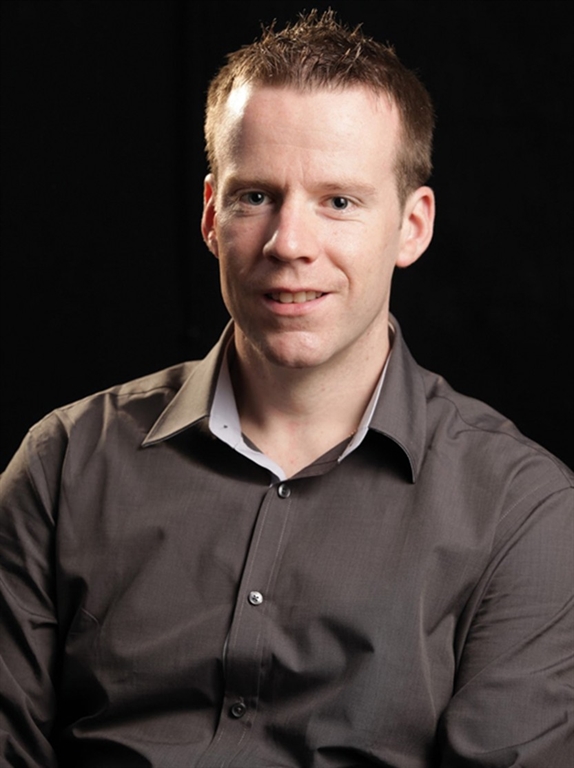
Dr Barry Houlihan
That notion of reflecting the themes that are important for the region came into sharp focus over the last decade, when research by Catherine Corless made clear the extent of maltreatment of women and children within the Tuam Home, as
well as the evidence of poor burial practices for the children who died there. The story came to global attention in 2015 when The New York Times wrote an extensive story on the scandal.
The Tuam Home was one of many established across Ireland early in the 20th century. Unmarried mothers were forced into the homes by pressure and stigma of Church and State in society and from where children were forcibly given up for adoption
or fostering. What emerged from Tuam would shock the world as local historian, Dr Catherine Corless’s research revealed that hundreds of children from the home had been buried within a septic tank on the grounds of the home and without
proper certification, and thousands more had been adopted against their mothers’ wishes.
Stigma and pressure
Dr Houlihan said: “The Tuam Mother and Baby Home was one of many such Homes around Ireland. Tuam Home closed in 1961. Unmarried mothers and pregnant women were forced into such homes in their thousands throughout the 20th century (the
last such home closed in 1998) largely under the stigma and pressure of the Catholic Church in Ireland, supported by national and local authorities.
“In recent years a local historian, Dr Catherine Corless conducted new research into the Tuam Home, and discovered that 796 children who died in the home had no formal burial certificates. This prompted her research into burial practices
at the home. Thousands more died or were forcibly adopted from Tuam and other such Homes in Ireland. It is believed the infants’ remains were buried in a site marked as a septic tank on the Tuam Home site.”
The home, a former workhouse, opened in 1925 and although owned by Galway County Council, it was run by an order of Catholic nuns – the Bon Secours Sisters. At the time single mothers in Ireland were ostracised by society and homes like
Tuam sprang up across the country. Women would be forced to give birth in the homes, and over the course of the next four decades some 35,000 children were born in these homes.
Conditions were bad in many of the homes, and in Tuam things were particularly bad. Over the 36 years that it operated an average of one child died every two weeks. The first sign that something terrible had happened at the site came more
than a decade after it was closed.
The Home was demolished in 1972 and work began on building new council housing on the site. In 1975, two boys found some human remains while they were playing on the site – at the time it was assumed that these were from a famine-era gravesite
and a priest was called to bless the site.
However, those explanations did not satisfy local historian Dr Corless and she spent years researching the home. During that research, Dr Corless made use of the university’s archive and local history collections, as well as records relating
to the operation of the Tuam Home and archives of the Diocese of Galway, held by various bodies, and as the investigation gathered pace more people became involved.
Dr Houlihan said: “Catherine did make use of our local studies and local history archive collections at the Hardiman Library. The New York Times journalist also conducted research with us. Catherine accessed records elsewhere, such as
those held by Galway County Council who owned the Tuam Home (and which was operated by the Bon Secours Sisters). Historians, such as National University of Ireland, Galway colleagues Dr Sarah Anne Buckley and Dr John Cunningham, as
well as Human Rights expert Dr Maeve O’Rourke, were actively involved in researching the history of these homes, as well as the Magdalene Laundries, another Church-run network of institutions for unmarried or so-called ‘fallen women’.
“Investigative journalist Conal O’Flatharta wrote on these issues, such as forced adoptions and vaccine trials on children by major pharmaceutical companies, for years in national media before public awareness took interest.”
Fighting for access
This broad body of research was actively supported by archivists and the collections they maintain. Without them, the job of uncovering the truth would have been much more difficult. And while the value of archives go far beyond the headlines
generated from this particular episode, it does serve as a useful reminder of their impact.
As the story of Tuam began to emerge and take hold in the press, the Irish government was forced to respond and in June 2014 it ordered a national commission to investigate the home and others in Ireland. Again, access to evidence and
records held in archives would be crucial for the commission. Dr Houlihan adds: “My own early research was on cultural memory of the homes, the public legacy of the homes today, as well as the record-keeping of the State and the authorities
who ran the homes. As access to records of the Homes and of adoptees became a central point of the State investigations, I was aware that archivists needed to contribute more to this national issue.”
Various commissions over the years have helped to heal some of the hurt, and Dr Houlihan points out that attitudes in Ireland have been transformed in recent years. Talking about local reaction to the news about the home, he says: “I think
Galway opinion was like much of Ireland – it was of shock at the extent of hardship and loss experienced by the survivors and of the children adopted, who as adults today are still fighting for access to their own records.
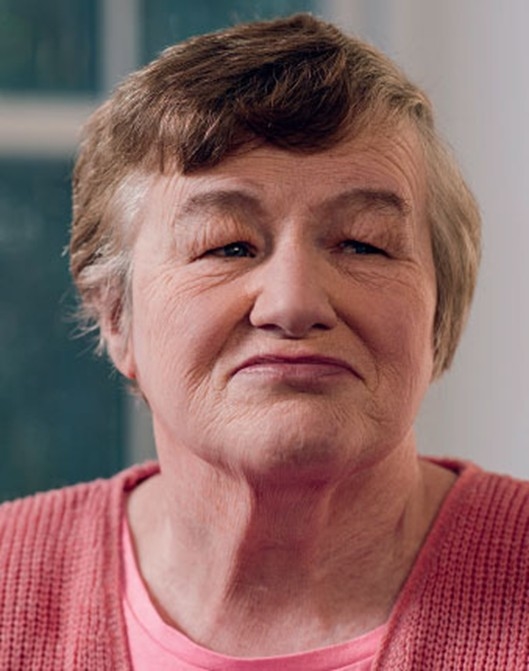
Tuam survivor Christine Carr
“Tuam was not unique, similar homes operated freely around the country. However, the burials of 796 children in a septic tank as in Tuam is devastating to consider. Ireland has changed more in the last 10 years than it did in the previous
50 years or so in terms of social change. There has been a series of Commissions of Investigation over the last two decades into systemic abuse of children by the Catholic clergy and within institutional schools, as well as in the
Magdalene Laundries. All these networks and institutions affected the lives of women, children and the most vulnerable in our society. This is a national reckoning with a shameful past that still needs to be processed. It is a trauma
for all of us to bear."
Permanent record
There are ongoing efforts to find out more about the children who were adopted and give them a better understanding of who they are and their backgrounds, But for many of those individuals directly affected by the scandal, there is still
more to be done. One of the ways that trauma is being addressed is through the Tuam Mother and Child Home Oral History Project.
The Oral History Project is building a collection of survivor stories, and its website states the main aim is “to enable the survivors of the Tuam institution and their families to tell their own life stories, in the way that they want
them to be told. In that regard, members of the project team will record and archive the histories and life stories of survivors and their families, as well as the memories of others connected in any way with the institution or with
those who spent time there.”
The project also promises to:
- permanently preserve and maintain the recorded recollections of individuals in the Hardiman Library in NUI Galway along with relevant personal documents;
- provide access to this material for historical research/print or online publication/lectures/education programmes and other legitimate academic purposes. Interviewees themselves will determine whether to make their testimonies available
immediately or at some point in the future;
- to work with survivors to provide an artistic response to their stories.
Interviews with survivors are conducted by researcher Mary Cunningham, and Dr Houlihan says: “I then work closely with Mary on receiving the digital audio files and transcripts. A unique aspect of this project is also the archiving of
digitised personal documents provided by survivors. These include personal and family photographs, birth and marriage certificates of their parents, correspondence with local authorities and elected officials, social worker files and
reports relating to the childhood experience of the survivors from when they were fostered or adopted.
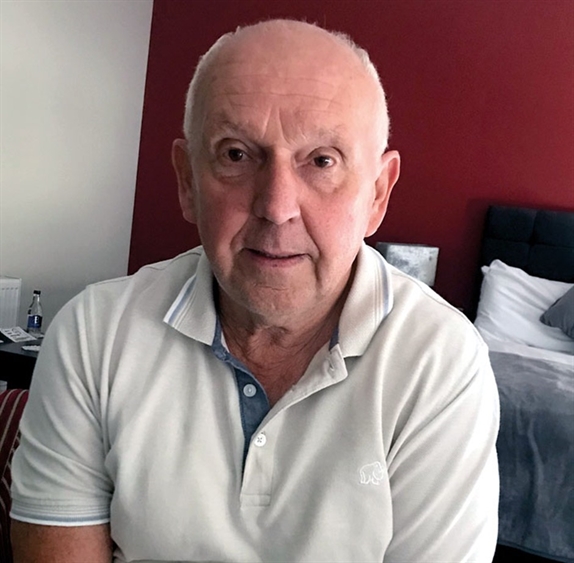
Tuam survivor P.J. Haverty
“My work entails the appraisal of all material received, cataloguing of all items, creation of metadata for each interview and linked files, and also clearing all and any legal requirements for each interview, such as personal data of
survivors – like their date of birth or home address, but also instances of third parties’ data and those named within the interviews. I also then ingest all items onto our open access repository. It is a complex process but important
for the integrity of the project and for our relationship with survivors that they trust in the archival process.”
Warmth and strength
Dr Houlihan adds that the whole process has brought positives – not just to those telling their stories.
“The project has been a truly unique experience,” says Dr Houlihan. “It can only exist through the openness and trust of survivors in giving us their personal testimony to preserve and make accessible online. For generations, the state
have ignored their requests for help and for access to personal records. Recent State enquiries and mismanagement of records has not helped. That is why the support of survivors for this partnership with NUI Galway has been so rewarding.
Their testimony is already being used within new theatre and writing work by our students, a cohort who were not born when the last Home closed.
“All survivors asked of us was that nothing in their words be changed and for their experiences to be listened to. They have created an archive that is unique in Ireland, and internationally, and will inform the public and for future generations
of all that happened in an Ireland that is not far removed from us today. Most of all, despite a deep trauma in their lives, the warmth and strength of all survivors comes through from this extraordinary archive. Their voice is important
– it needs to be heard – and oral history is one way for an archive such as this to play a role in healing those pasts.”
Dr Houlihan adds: “Working with students in the University on these projects is very rewarding. They have no real memory of THAT Ireland and have incredible empathy and care for the survivor’s stories and experiences.”
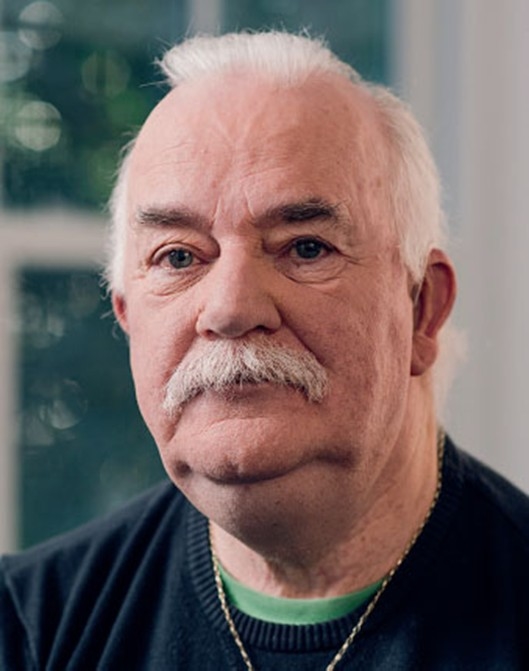
Tuam survivor Patrick Duffy
This article first appeared in CILIP’s Information Professional in April 2021. To read more Information Professional back issues, visit the archive.







